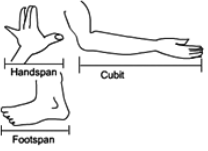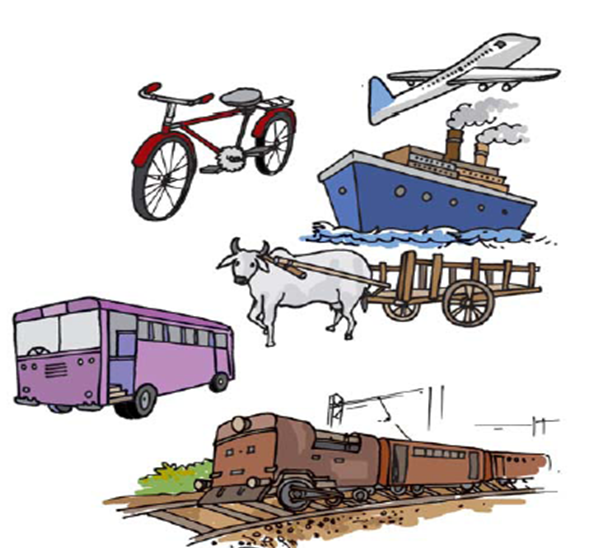- Books Name
- CBSE Class 6 Science Book
- Publication
- Param Publication
- Course
- CBSE Class 6
- Subject
- Science
History of length measurement
Arbitrary Units of Measurement: Before the development of standard units of measurement, people used arbitrary units of measurement. Some of them are still in use at some places. Handspan,
finger-length, cubit (length between the elbow and finger tips), foot-length and arms-length are some examples of arbitrary units of measurement.

Disadvantages of Arbitrary Units of Measurement: You have seen that arbitrary units are made up of lengths of different body parts. These lengths can vary from one person to another. This can create lot of confusion as there would be no uniformity in measurement. We need standard units of length and other physical quantities to obtain the same value for a measurement.
- Books Name
- Class 6 Science Book
- Publication
- PathSet Publications
- Course
- CBSE Class 6
- Subject
- Science
Story of transport:
Transport: It is a mechanism in which people and goods are carried from one place to another.
In ancient times people used to move only on foot and carry goods either on his back or on the back of some animals.
In the earlier times, land Transport was done using animals or human backs, while water Transport was done on hollow wooden logs or simple wooden boats
After the invention of wheel, Bullock carts and camel carts were developed.
A great change in the modes of transport was made:
- by the invention of wheels.
- by the invention of the steam engine.
Transport then evolved in the 19th and 20th Century to bus, trains, cars, Airplanes, jets, steams and water boats, etc.
With the changing times, transport also has gone through various modifications i.e. from animals to the invention of wheels. The evolution of transport is evident when we observe the fast cars, bullet trains etc. Even today new modes of transport are being researched upon.



 Param Publication
Param Publication
 PathSet Publications
PathSet Publications
